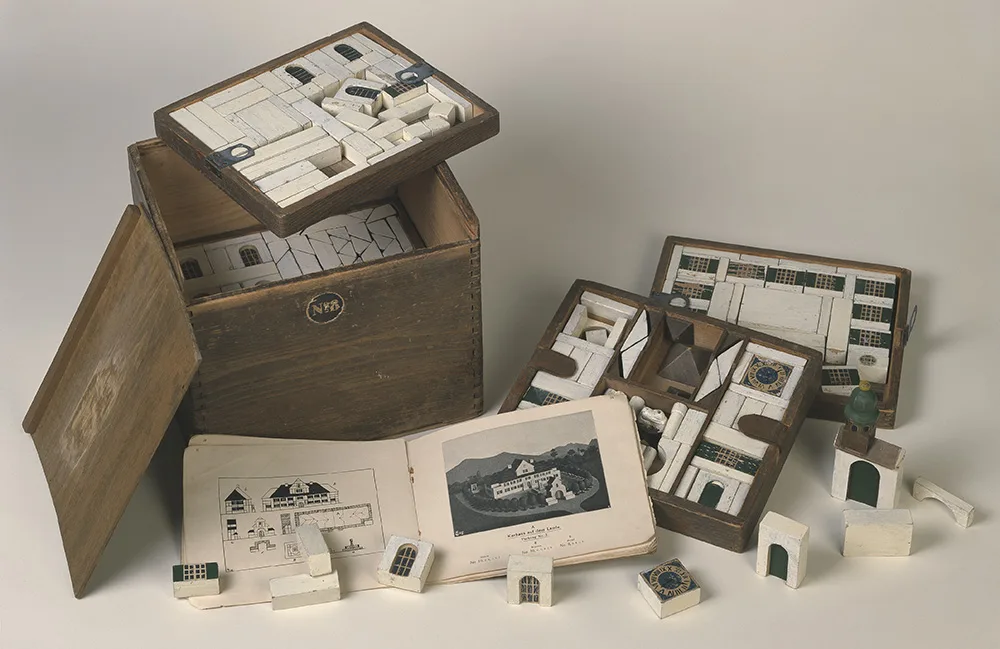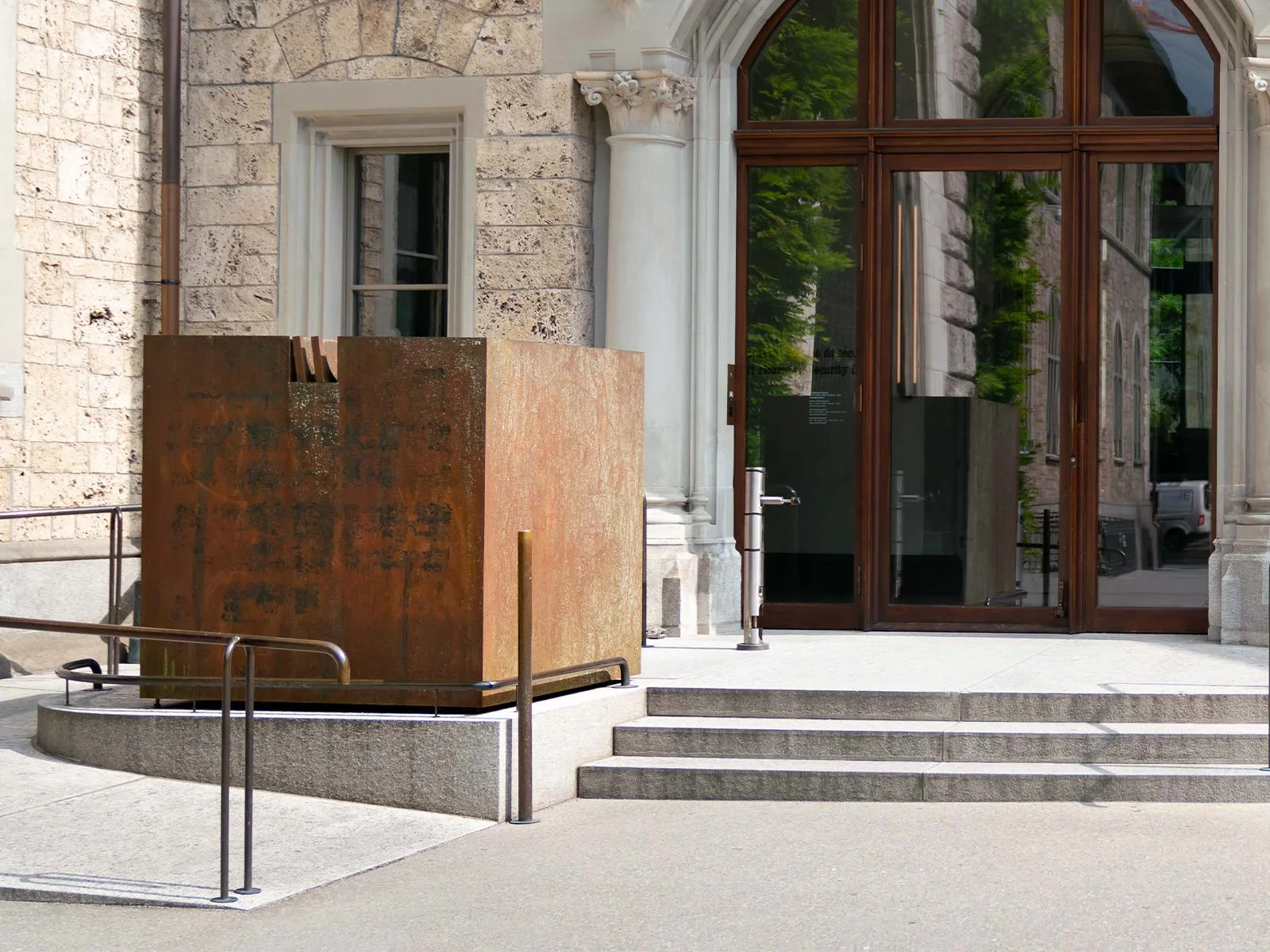
Swiss National Museum
The child as master builder
About 100 years ago, Carl Zweifel designed a wooden construction kit for children. The toy became a massive bestseller, and was also a valuable educational tool.
The world was a different place 100 years ago. Video games, the internet and social media were still a long way off, and the shelves of the nation’s toyshops looked very different too. The big money-spinner was a wooden box created by Carl Zweifel (1884-1963). The architect from Lenzburg started producing his ‘Swiss construction kit’ in 1915. The wooden box was a treasure chest offering boundless potential for creativity.
Plain and uninspiring to look at from the outside, Zweifel’s wooden box revealed its treasures layer by layer on the inside: six drawers stacked on top of each other were filled with painted wooden blocks in a variety of colours and shapes. The blocks had to be arranged in a particular order in the drawer so that everything would fit in. The fact that this also produced captivating geometric patterns and gave the individual drawers ‘visual character’ was a delightful side effect. An enclosed booklet contained a range of instructions for budding architects to copy, such as a ‘countryside health spa’, including floorplan. Finally, a photograph showed how the finished construction should look, complete with park – an idyllic scene made out of blocks.

Swiss construction kit by Carl Zweifel, around 1920.
Swiss National Museum
Reference to national identity in every child’s playroom
People were quick to catch on to the merits of the Swiss construction kit. In 1915, the year Zweifel’s wooden box was created, the kit won third prize in the Swiss Werkbund’s toy competition. A year later, the catalogue produced by Zurich toyshop Franz Carl Weber advertised the construction kit as a ‘genuinely creative play set’ and the buildings as ‘picturesque and pleasing’ thanks to the brightly coloured bricks. The focus of the box contents on Switzerland is indicative of the more intense feeling of national identity in all areas of day-to-day life during World War I. Even in children’s playrooms, the national self-contemplation found its way in more or less direct form into children’s books, board games and toys.
A glance across the border shows that at the same time artists of the Wiener Werkstätte (Vienna Workshop), such as Koloman Moser, were also working on similar construction kits with carefully shaped and painted wooden bricks. Formation of good taste, new stylistic idioms in design and architecture and progressive teaching ideas were perfectly combined in the form of the building block.
In this game, the child becomes an architect who has to be able to read and interpret the building plans provided. As master builder, he or she assembles the individual blocks into a building. Ultimately, the child is the architect of building ensembles, villages and – with an adequate supply of materials – entire cities. With the building blocks it wasn’t just boys who could plan, design and build to their heart’s content – the kit also appealed to girls. More than 100 years ago, progressive pedagogical ideas in the form of toys were thus placed in the hands of girls and boys on an equal footing.
German pedagogue and student of Pestalozzi Friedrich Froebel (1782-1852), whose ‘toys’ for kindergarten children also contained coloured building blocks, was the first to give a pedagogical interpretation to the act of arranging three-dimensional shapes. Playing with small pieces of wood and building blocks made out of all sorts of leftover materials had probably been around since much earlier. But in the 19th century it became a tool of pedagogical efforts to educate children by aesthetic means.
Pacifist toys?
From a commercial perspective, the ‘Swiss construction set’ should also be considered an alternative to products on the German toy market. During the war years these German products were difficult to obtain or completely unavailable in Switzerland, and the new construction kit was able to step in and occupy a market segment that was available. The Swiss product continued to be successful long after the war, and Carl Zweifel was particularly influential in the Verband der Schweizerischen Spielwarenfabrikanten (Swiss toy manufacturers association).
Was the Swiss construction kit, which came onto the market in the middle of World War I, conceived of as a ‘peace toy’? There are parallels to other areas of childhood: for example, British civil engineer Hugh Lofting (1886-1947) invented the famous children’s book character Dr Dolittle in the trenches of Flanders in 1917/18, creating a collaborative and peaceable unifying figure who stood in sharp contrast to the hate propaganda previously widespread in children’s books and toys. Lofting wrote about Dolittle in illustrated letters to his children, so as to avoid having to tell them about the horrors of the war. With Zweifel’s building blocks, you can not only construct peaceful villages and cities, but also create quite splendid fortresses and castles. According to the instructions, the intention of his construction kit was to ‘build and become’.

Lofting’s stories about Doctor Dolittle were published as a book in 1920.
Wikimedia



